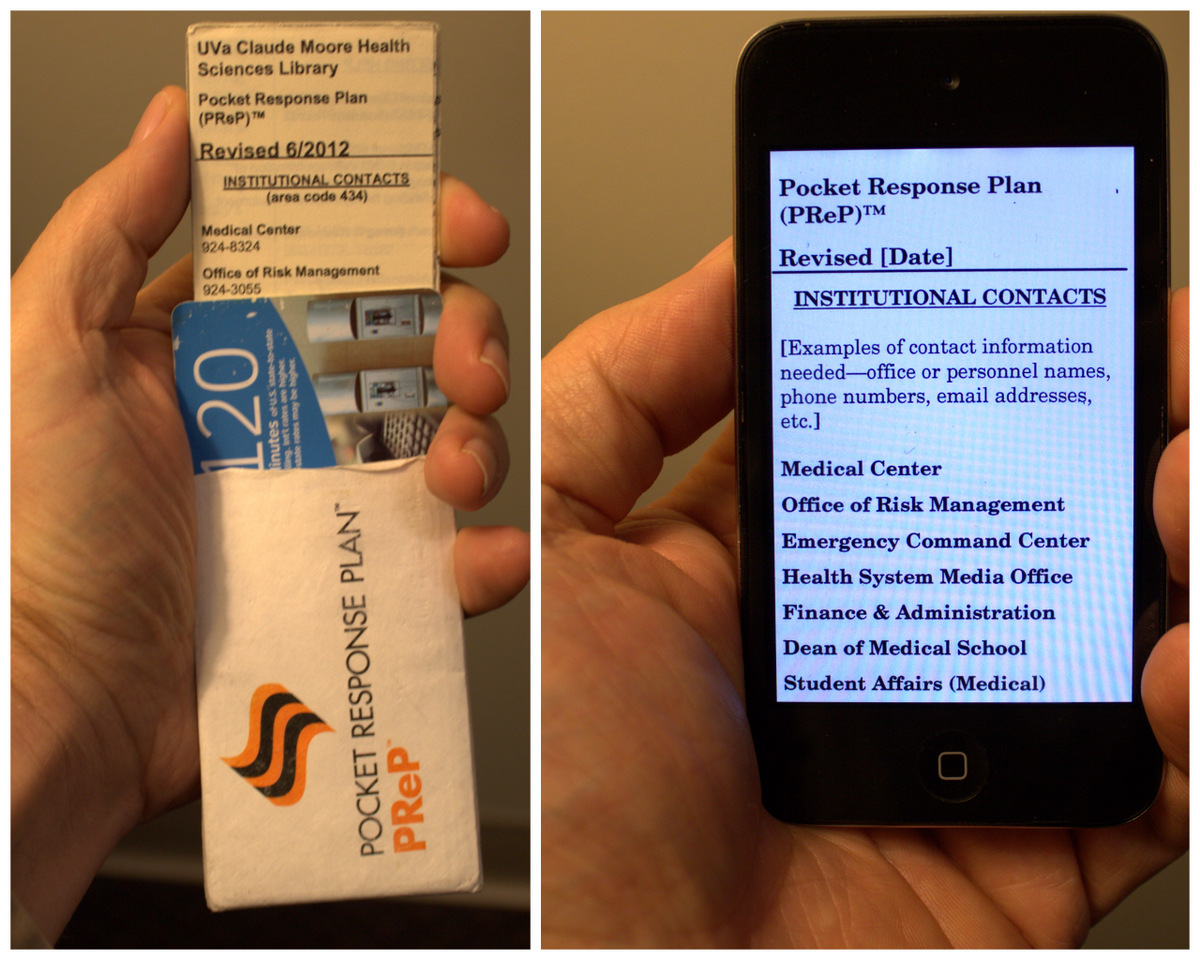Friday, October 26th:
We sent out an email to everyone on our Service Continuity Team asking for any changes to contact information and availability during the period of time Hurricane Sandy was predicted to affect the Central Virginia area. Changes were made to our service continuity plan based on responses.
Sunday, October 28th:
University officials announce that classes are canceled for Monday and the clinics will be operating on a modified schedule.
Monday, October 29th:
10:30am: We announce on the Library’s web page and Facebook that the Health Sciences Library will close at 7pm and that our after-hours area will open at that time. We also activate our service continuity plan. Our service continuity plan involves steps for keeping our core services and resources available from home. These core services and resources include online resources, the proxy server, interlibrary loan (borrow), chat, reference email, and access to core textbooks.

Three staff are designated to handle access issues with online materials. This provides redundancy if someone loses power. Two staff are assigned to proxy issues and about four staff share chat/reference email. Our ILL supervisor is the only one who can maintain ILL remotely, and we need power here at the library and her home for that to happen.
1:37pm: Lots of clouds but very little wind. Rain and wind are suppose to kick in later this afternoon.
1:53pm: Hard rain begins to fall. Wind is picking up.

Outside the Health Sciences Library at 1:53pm.
4:05pm: The SE/A RML in Baltimore will be closed tomorrow, and their “buddy” plan with PNR in Seattle has been activated. The “buddy” plan involves forwarding all phone calls SE/A to Seattle. This might come into play if SE/A libraries need to have their DOCLINE requests re-routed due to closures.
4:47pm: Two hours until Hurricane Sandy makes landfall on the New Jersey coast. Currently, from what I can see as I look outside the library, we have rain with a good breeze. Temperature has dropped to 44 degrees. The last hour or so I’ve been going over power outage scenarios.
Tuesday, October 30th:
7:15am: Made it home safely at 8pm last night to power but no internet. Still no internet this morning, so I came into work at 6:30 to check email and weather conditions. Weather conditions this morning are a lot like they were last night: breezy with a light rain.
I updated our home page (we’re opening today at our regular time) and the library’s voicemail. Time now to sort out the staffing situation.
1:07pm: Staffing has been worked out and we will be able to operate under our normal hours. Our service continuity plan will remain in effect throughout the business day.
1:25pm: Our Head of Collection Development, working from home, notified library staff that he fixed an access problem for one of our online journals.
3:35pm: We will deactivate our service continuity plan today at 5pm. Our Service Continuity Team will gather for an After Action Review on November 8th when we will talk about what worked as well as areas we need to improve.
Thursday, November 8th:
Our after-action review focused on communication issues. Specifically, the best way to contact staff that the library is closed and that the Service Continuity Plan has been activated. We had been relying on staff to contact the University’s incident notification telephone number, but, conceivably, there could be situations where staff are not aware that something has happened and therefore would not think to call that number. While we consider alternatives, all departments may work out notification systems tailored to their staff.
In addition, we determined that we need to list additional staff on the Service Continuity Team, update our procedures for providing updates on our webpage, and add additional vendor contact information.
The Service Continuity Plan will be updated and distributed to team members by the end of next week.












